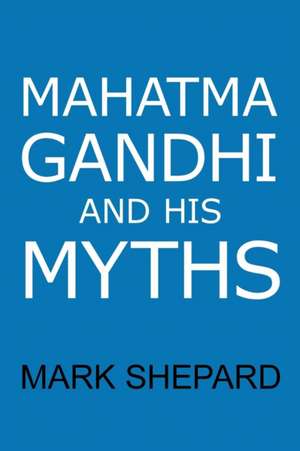Mahatma Gandhi and His Myths
Autor Mark Sheparden Limba Engleză Paperback – 25 apr 2017
| Toate formatele și edițiile | Preț | Express |
|---|---|---|
| Paperback (2) | 48.06 lei 6-8 săpt. | |
| Shepard Publications – 25 apr 2017 | 48.06 lei 6-8 săpt. | |
| Simple Productions – 31 dec 2001 | 66.70 lei 38-44 zile |
Preț: 48.06 lei
Nou
Puncte Express: 72
Preț estimativ în valută:
9.20€ • 9.99$ • 7.73£
9.20€ • 9.99$ • 7.73£
Carte tipărită la comandă
Livrare economică 23 aprilie-07 mai
Preluare comenzi: 021 569.72.76
Specificații
ISBN-13: 9781620355268
ISBN-10: 1620355264
Pagini: 50
Dimensiuni: 152 x 229 x 4 mm
Greutate: 0.09 kg
Editura: Shepard Publications
ISBN-10: 1620355264
Pagini: 50
Dimensiuni: 152 x 229 x 4 mm
Greutate: 0.09 kg
Editura: Shepard Publications
Recenzii
"A model of Gandhian journalism... [Shepard] has put his finger on seemingly all of the popular (and some less common) misconceptions of both Gandhi and his philosophy, including some particularly important ones... This book takes little space to cover its topic concisely and well. It would be [some] of the most valuable pages many people could read about Gandhi." -- Global Conscience, July-Sept. 1990










